Adopting a Cat
Please enjoy this video from Jackson Galaxy, a well-known cat behaviorist and host of...
Read moreFor centuries, the Gray Wolf’s (Canis Lupus) relationship with humankind has been complicated. Gray Wolves can be found on three continents and as of 2005, 37 subspecies are recognized. North America is home to four subspecies—Northwestern Wolf, Great Plains Wolf, Arctic Wolf, and the Mexican Wolf. Once common throughout all of North America, Gray Wolves were hunted to extinction in much of their range by the 1930s. Thanks to reintroduction efforts, they have started to recover.
After a 70-year absence, Gray Wolves are naturally returning to Washington State. This is an exciting time for conservationists and wildlife enthusiasts, who value the role this keystone species plays in maintaining a healthy ecosystem. According to the Washington Department of Fish and Wildlife (WDFW), wolves were formerly common throughout much of the state, but as ranching and farming by European-American settlers expanded during the period between 1850 and 1900, the wolves were heavily trapped, poisoned and hunted. By the 1930s, wolves had been eliminated as a breeding species in Washington.
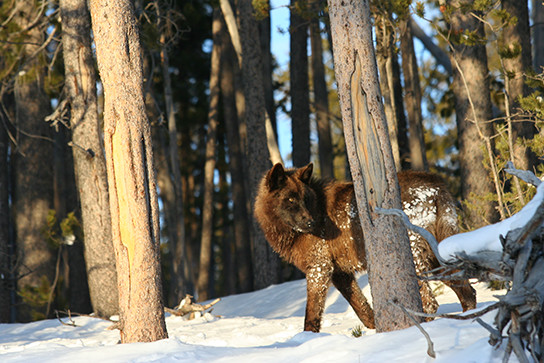
Gray Wolf black morph. Photo by Shana Dunkley
Wolf sightings in Washington have been on the increase since 2005. For the first time in more than 70 years, a pack with pups was documented in the state in July of 2008. Since then, at least 10 more packs have been documented, mostly in Northeastern Washington. The WDFW maintains a page on its website that lists known wolf packs in the state. They also encourage citizens to report wolf sightings to assist them in tracking the species’ recovery.
The return of the wolf to Washington has elicited a wide range of responses from celebration to trepidation. Wolves are iconic animals, revered as inspiring symbols of the wilderness by some, while at the same time feared by others. Wolves are apex predators and very beneficial to the natural ecosystems they inhabit. They help keep prey species populations at a sustainable level to help prevent overpopulation. The carcasses left behind by wolves are an important food source for scavenger species such as foxes, wolverines, ravens, jays, eagles and vultures. This is extremely important during times when food and water are scarce in the environment.
In reality, they are simply a part of the native Northwest ecosystem, and only time will tell how they will fare in 21st-century Washington after a 70-year absence. As is always the case with wildlife, the wolves’ success will largely depend on human actions and attitudes toward them.
Did you know? Wolves are state and federally listed as an endangered species.
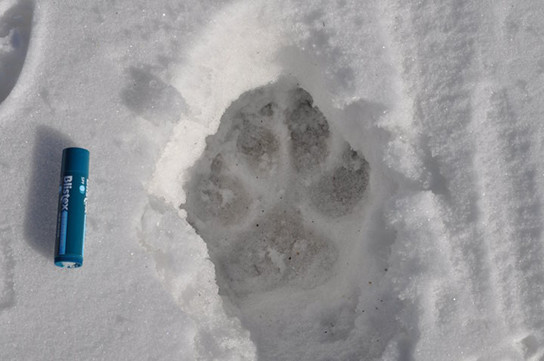
Gray Wolf track with a tube of lip balm next to it for size comparison. Photo by Jen Mannas
Gray Wolves are about twice the size of Coyotes, weighing between 70 and 120 pounds, and are up to six feet long including their tail. They are the largest living canids. Their fur is variable and can be white, brown, gray and even black. They have wide tufts of hair on their face near their ears and white fur around their mouth.
Did you know? Wolf tracks are about five inches long by four inches wide, much larger than Coyote or domestic dog tracks.
Habitat:
Wolves are very adaptable and can live in a variety of habitat types including deserts, forest, grasslands and the arctic tundra. However, they fare best in areas where human populations are low.
Dens:
Dens are often in underground burrows but can occur in hollow trees, boulder piles and even old beaver lodges. As pups grow older and start to venture out of the den, the female will move them to protected locations called rendezvous sites. During the summer, several rendezvous sites are used until the pups are large enough to travel with the pack and join them on hunts.
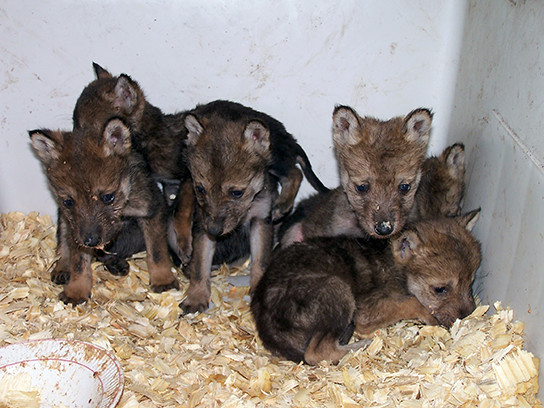
Mexican Gray Wolf pups. Photo by Jen Mannas
Mating occurs in mid to late February and the pups are born in the spring. Most packs only produce one litter a year and on average the litter size is between four and six pups.
Most wolves start to disperse from their natal pack at two to three years old to search for mates and start a new pack. On average, dispersing wolves will move 60 miles from their natal pack but can travel up to 500.
Because wolves are large predators, they have adapted to hunt large prey. Ungulates are their main staple including elk, deer, moose, and bison. Wolves have a very strategic hunting method and they work together as a pack to take down large prey animals; however, most of their hunts are unsuccessful. They are also selective hunters and tend to prey on younger, older, or injured animals. This can benefit herds by weeding out the slow, sick or old animals leaving behind prime-age animals in good health.
Wolves will also scavenge on carrion and kill livestock from time to time.
Did you know? Wolves can sprint after prey at 36 to 38 miles per hour.
Wolves are highly social and live in packs consisting of a breeding pair (alphas), their offspring from the previous year, and new pups. Other breeding adults can sometimes be present as well. The pack hunts, feed, rears pups, and rests together. Pack size can be from four to 11 wolves.
Wolves are very territorial and will defend their territory against other packs.
Pack members communicate with one another through howling. Howls can be heard five miles away. Their howls tend to be more drawn out than those of coyotes, who make shorter yapping sounds. Wolves will also growl and bark.
Did you know? Wolves are shy by nature and avoid contact with humans.
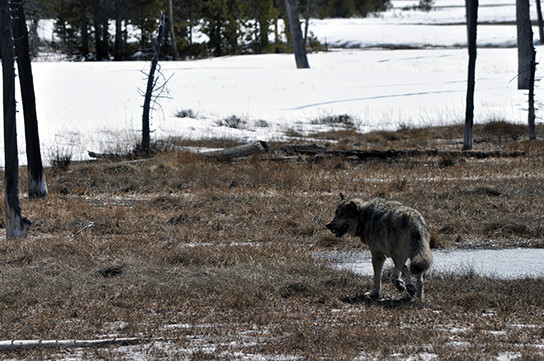
Gray Wolf. Photo by Jen Mannas
When camping:
Never approach or feed a wolf in order to keep them from becoming habituated to people. Keep campsites free of garbage and excess food. In the rare case that you encounter a wolf, it should run away. If not, stand tall, act aggressively, shout, and don’t ever run. Instead, back away slowly while facing the animal.
Keeping your pets safe:
Wolves may consider domestic dogs as a threat to their territory, resulting in an attack. Keep your pets safe when recreating in wolf country by keeping them on a leash and close by at all times.
Keeping livestock safe:
Wolves will occasionally prey on livestock such as sheep and cows. Livestock producers can prevent or reduce the chance of attacks by removing sick or dead livestock from grazing areas, using guard dogs, and keeping livestock securely in pens at night.
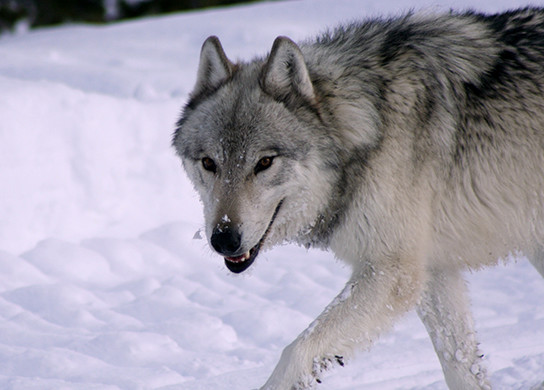
Gray Wolf in the Hayden pack. Photo by Shana Dunkley
Burke Museum. February 3, 2016. Mammals of Washington: Gray Wolf.
Feldhamer G.A., Thompson B.C. & Chapman J.A. (Eds). (2003). Wild Mammals of North America, Biology, Management, and Conservation (2nd ed.). Baltimore MD: The Johns Hopkins University Press.
Washington Department of Fish and Wildlife. February 3, 2016. Conservation: Gray Wolf.
Please enjoy this video from Jackson Galaxy, a well-known cat behaviorist and host of...
Read moreHow much will it cost to care for a new animal companion? It’s important to...
Read morePlease enjoy this blog post from Victoria Stilwell’s positively.com website....
Read more